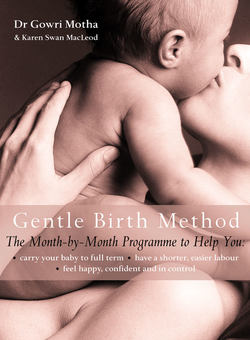Читать книгу The Gentle Birth Method: The Month-by-Month Jeyarani Way Programme - Karen MacLeod Swan - Страница 22
Pitta Mothers
Typical characteristics
ОглавлениеSkin redness
Medium-size body frame
Slightly oily skin
Fluid retention
Angry
Mentally irritable and edgy
Quick tempered
Intolerant of others’ behaviour
Experiences skin burning sensations
Feels too hot all the time
Can’t tolerate hot weather
Hates closed environments
Prone to feeling faint
Prone to increased sweating
Good memory
Sound sleeper
Pitta in balance: perceptive and intense
Pitta out of balance: angry, impatient and frustrated
During Pregnancy
Prone to bleeding in early pregnancy
Prone to post-partum mental problems
Excessive appetite
Can have semi-solid stools
How to Counteract Pitta
The remedy is to cool and calm everything down.
Exercise and Lifestyle Changes
All gentle forms of exercise, e.g. gentle swimming or gentle tai chi, would be beneficial. Pitta mothers must take care not to increase their heart-rate by more than 110 beats per minute as this can aggravate pitta.
Walks with your partner. Walking in the moonlight is specifically recommended in the Ayurvedic text because it cools you down.
Pitta mothers need a lot more love and affection than other mothers.
Food
Avoid hot and spicy foods like pepper, chillies, garlic, vinegar, salad creams, pickles and sour things in general.
Acidic foods are heat-producing as a general rule and this aggravates pitta.
No alcohol as it causes your system to heat up, aggravating pitta.
Avoid foods that are too hot in temperature.
Avoid cheese as it is very difficult to digest.
Most vegetables are good – cucumber, marrows and pumpkins are ideal; beetroots and carrots are very cooling and recommended.
Eat melons as a separate meal – they need special enzymes from your pancreas to digest them. Eating them with other food puts a huge strain on your digestive system.
Eat grains such as rice, millet, corn and oats in moderation (not more than 1 small cup of any of these cooked grains per meal).
Try to cut out tomatoes. If you must eat them restrict it to only once a week. Tomato is very acidic and can cause aches and pains. Cooked tomato is worse than raw tomato.
Coconut is very good for reducing pitta. The white kernel and coconut milk, which is extracted from the white kernel, can be used for cooking. However, use only small amounts of coconut in your cooking, as it is high in fat.
Apples are very good.
Avoid citrus fruits as acidic food increases pitta.
Having a banana once a week can reduce pitta. As a general rule I do not recommend them as they are too fattening and mucus retentive.
Vegetable soups with herbs are very soothing.
Congee, an overcooked broth of rice with water and salt, is very easy to digest. To make it more interesting, a little garlic or ginger and a few vegetables can be added to it.
Milk is cooling and is good for reducing pitta. Ideally it should be goat’s milk – try to avoid cow’s milk unless it is labelled with the A-2 protein as opposed to A-1. The A-1 proteins that are found in the herds of some cows produce undesirable effects in the human digestive system and have been associated with gut problems (specifically colon cancer), coronary disease, diabetes mellitus (Type I), multiple sclerosis and autism. In the near future, it will be possible to segregate the cows that produce A-2 milk from those that produce A-1 milk. This will be done by a simple test on a hair of each cow. (A-2 milk is already on the shelf in Australia and New Zealand.) Closer to home, Guernsey cows produce A-2 milk. However, Jersey cows produce A-1 milk, so if you are buying milk look for pure Guernsey cow milk. (This was reported on BBC Health News, 9 April 2001.)
Herbs
Choose cooling herbs like coriander in food.
The herb Bala (Cida codifolia), a main ingredient in my Baladi Choornam drink, is very important for keeping pitta under control.
Shatavari (Asparagus racemosus) is another popular Ayurvedic remedy that can reduce excessive pitta, however, it must be taken under the supervision of an Ayurvedic physician.
Treatments
Creative Healing massage includes a cooling procedure that is good for counteracting excessive pitta (see Normalizing Body Temperature, page 57)
For massage, use essential oils like lavender, jasmine and sandalwood. The recommended base oils for pitta are sesame oil and coconut oil.
Have a milk bath as Cleopatra did. Simply add some milk into your bath water (cow’s or goat’s milk).
Take a flower bath, with petals of flowers floating in the bath. Try rose or jasmine flower baths.
Use meditation to calm the mind.
Listen to gentle and calm music.
Pitta Labour Issues
Factors to consider during delivery:
Labour tends to be shorter than average.
High blood pressure can develop during labour. This must be monitored – if pitta is highly out of control it may lead to eclampsia.
If there is increased pitta, it can lead to bleeding during delivery of the placenta.
It should also be noted that pitta mothers are more prone to post-natal depression. This can be prevented by keeping to the pitta protocol for diet and treatments.
